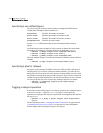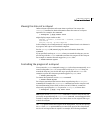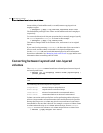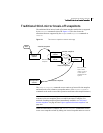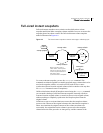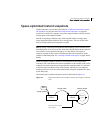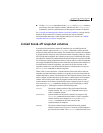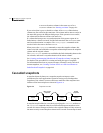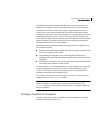
306 Administering volume snapshots
Traditional third-mirror break-off snapshots
its data plexes. The snapshot volume contains a copy of the original volume’s
data at the time that you took the snapshot. If more than one snapshot mirror is
used, the snapshot volume is itself mirrored.
The command,
vxassist snapback, can be used to return snapshot plexes to the
original volume from which they were snapped, and to resynchronize the data in
the snapshot mirrors from the data in the original volume. This enables you to
refresh the data in a snapshot after each time that you use it to make a backup.
You can also use a variation of the same command to restore the contents of the
original volume from a snapshot that you took at an earlier point in time. See
“Restoring the original volume from a snapshot” on page 317 for more
information.
As described in “FastResync” on page 66, you can use the FastResync feature of
VxVM to minimize the time needed to resynchronize the data in the snapshot
mirror. If FastResync is not enabled, a full resynchronization of the data is
required.
Finally, you can use the
vxassist snapclear command to break the association
between the original volume and the snapshot volume. The snapshot volume
then has an existence that is independent of the original volume. This is useful
for applications that do not require the snapshot to be resynchronized with the
original volume.
Note: The use of the vxassist command to administer traditional (third-mirror
break-off) snapshots is not supported for volumes that are prepared for instant
snapshot creation. Instead, the
vxsnap command may be used as described in
the following section.
See “Creating traditional third-mirror break-off snapshots” on page 348 for a
description of the procedures for creating and using this type of snapshot.



